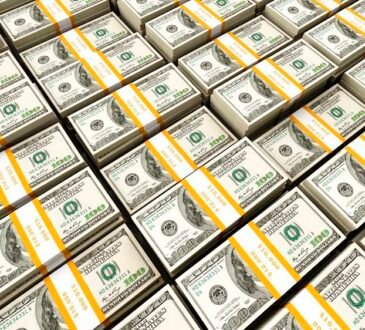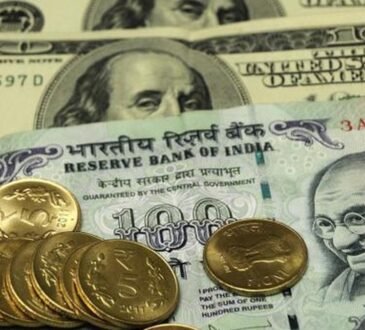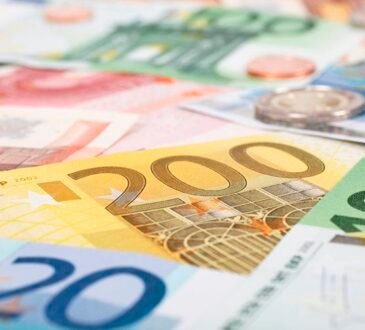Donald Trump’s latest pronouncements about the damage to the US from an overly strong dollar have rekindled a familiar conversation: can he weaken the world’s dominant reserve currency?
The short answer is no, or at least not without trashing the economy along the way. The long answer is that he might not have to, anyway.
The issue of dollar policy has bubbled up again because of an interview that Trump gave to Bloomberg as part of his campaign to regain the White House. “We have currency problems, as you know. Currency,” he said in a wide-ranging discussion of policy priorities for a second term in office.
“The depth of the currency now in terms of strong dollar/weak yen, weak yuan, is massive,” he continued. “And I used to fight them, you know, they wanted it weak all the time. They would fight it and I said, if you weaken it any more, I’m going to have to put tariffs on you. They went as far as they could with me, but I was very tough with it. Nobody talks about it now.” The result, he said, was a “tremendous burden” on US companies trying to sell their wares abroad.
Set aside here the fact that the trade-weighted dollar index is roughly level to where it was when Trump took office in early 2017, and the fact that a second Trump presidency is clearly no certainty. His chances of success may have been boosted by the attempt on his life two weeks ago, but that’s guesswork, and it is too early to build a clear sense of whether he would have had a more comfortable race in the November vote against incumbent Joe Biden or, now that the president has dropped out, against Kamala Harris.
Nonetheless, the dollar is the glue that holds global trade and investment together, so fund managers have little choice but to take this high-stakes salvo against the dollar seriously, particularly as Trump’s choice of running mate, JD Vance, is also a self-proclaimed fan of a weak buck.
But the Republican duo’s path to making a weak dollar a reality is extremely tangled. For one thing, as Deutsche Bank currency analyst George Saravelos spelt out in a note to clients, “the dollar would have to drop by a lot to matter”, possibly by as much as 40 per cent (yes, four zero), to close the trade deficit. That seems like a hefty target and a substantial financial stability risk even for an ambitious new administration.
One way for Trump to do this, though, would be to establish a reserve fund of foreign currencies. But again, Saravelos suggests that such a fund would have to tot up to perhaps $2tn (yes, trillion) to pack the necessary punch, requiring a huge amount of issuance of US government debt, with all the practical and political bear traps that involves.
The massive numbers don’t stop there. Yen watchers know that authorities in Tokyo spent some $62bn in late April and May in yen-supportive interventions earlier this year, with limited success. Scaling that up in line with the relative average trading volumes in the yen and the dollar, and the US would need $1tn of intervention for a two-week campaign.
“In sum,” Saravelos wrote, “the market is far too big even for the US Federal government to take on.”
Multilateral action to tame the dollar is also probably a non-starter, given the lack of consensus over whether exchange rates are a sufficiently serious problem to be worth the effort. This leaves only capital controls or the demolition of US institutional credibility as obvious potential options. Given Trump’s fondness for using the US stock market as a measure of his popularity and success, this seems, let’s say, unlikely. “Careful what you wish for,” said Steve Englander, head of currency strategy at Standard Chartered bank, who noted also that the aim of dousing the dollar conflicts bluntly with several of Trump’s other, inflationary, policy aims.
And yet, Trump appears to be enjoying some of that most precious resource in markets: luck.
Riding the high-yielding dollar higher against the yen, with its rock-bottom interest rates, has been one of hedge funds’ favourite bets for about three years, helping to push the dollar to its strongest point, and the yen to its weakest, in decades.
But the dollar has dropped back substantially against the yen in recent weeks — by more than 5 per cent since July 11, in fact, due in large part to signs of softer US inflation. Indeed, hedge fund group Man points out that the yen trade has been so “crowded” among speculators that its unravelling has the potential to inflict pain across other popular hedgie punts.
Japanese authorities, which have recent form for intervening in an effort to prop up the yen, are likely to fan the exchange-rate shift along further in the coming months, and a continuation of softly-softly monetary tightening by the Bank of Japan seems likely. In sum, that suggests this dollar pair may have peaked.
Ultimately, the easiest trick for nuking your currency is to crash your economy. Fortunately for all of us, it appears at least one major currency, the yen, is already dancing to Trump’s tune, quite by coincidence. This should ensure we won’t see this ill-fated natural experiment in the wild.




